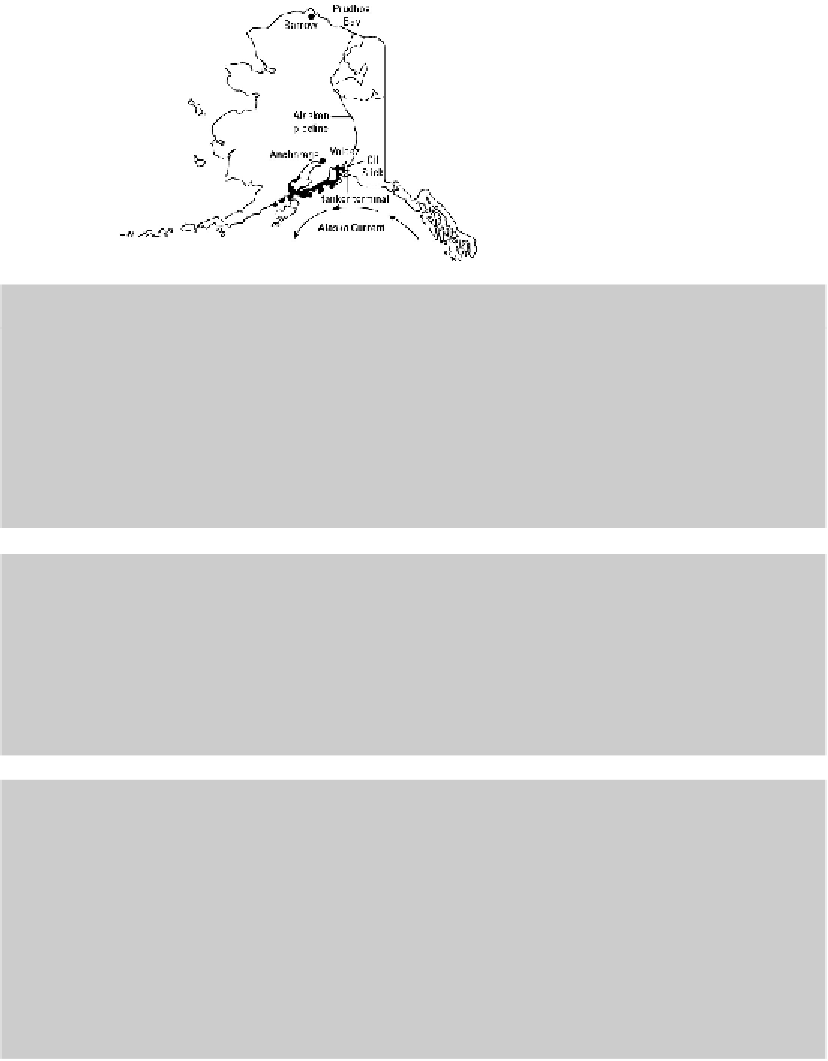Geography Reference
In-Depth Information
Figure 18-2:
The
Alaska Current
spread the Exxon
Valdez oil spill
over a great dis-
tance.
Bear bile, anyone?
One of the more intriguing human impacts on the environment concerns demand for an-
imal body parts to serve as folk remedies. In China, for example, powdered tiger bone
is the principal ingredient in a medicinal cocktail that is believed to relieve ulcers, mal-
aria, rheumatism, and other ailments. A similar brew that uses ground rhinoceros horn is
thought to heighten the sex drive and cure impotency. People use bile from the gallblad-
ders of bears to treat liver disease, fever, hemorrhoids, and other ailments. Literally hun-
dreds of millions (if not billions) of people belong to culture groups that swear by these
age-old remedies.
Local demand for body parts has taken its toll on the local supply of desired animals. As
a result, tigers and bears are nearly extinct in the wild in China. As numbers dwindle,
prices skyrocket. Bear bile reportedly sells in China for as much as 15 times the price
of gold. Tiger bone in parts of Asia sells for upwards of $500 per kilogram. As a result,
captive breeding programs in China raise tigers for slaughter for bones, and bears for
periodic “milking” of gallbladders. But even this cannot satisfy demand. Body parts must
be imported from somewhere else. And at prices like these, it's a poacher's dream come
true.
Here is where geography fully enters the picture. A geographically local (Chinese) de-
mand for body parts has generated a geographically broad (global) trade in them as well
as an attendant environmental impact. Thus, bears in Montana, Idaho, and Alaska (and
probably other states) are known to have been illegally killed to provide body parts for
Asian folk remedies. Likewise, tiger preserves in India and Nepal are periodically raided
and impacted by people who profit from medicinal demand. Underlying these threats to
the natural world is global connectivity. If Alaska was an isolated place, or if trade and
communications mechanisms did not connect Montana and China, then the bear popu-
lation would be safe — at least as regards to that particular threat. For better or worse,
however, bears and everything else are part of a world in which geographically local de-
mand can effect worldwide resource supply, and have global environmental implications.






